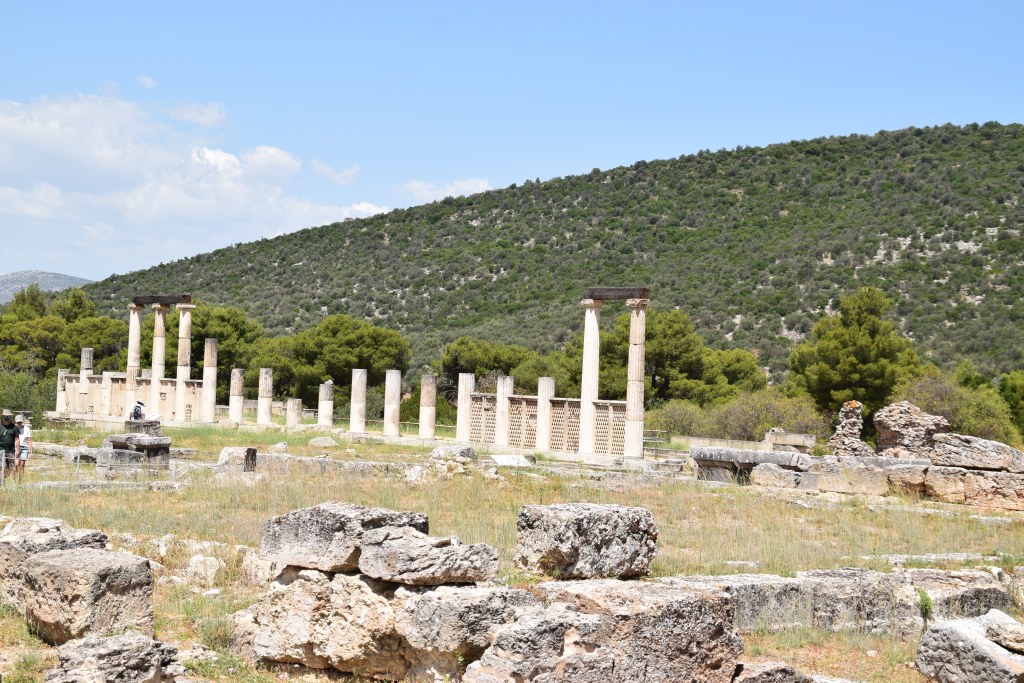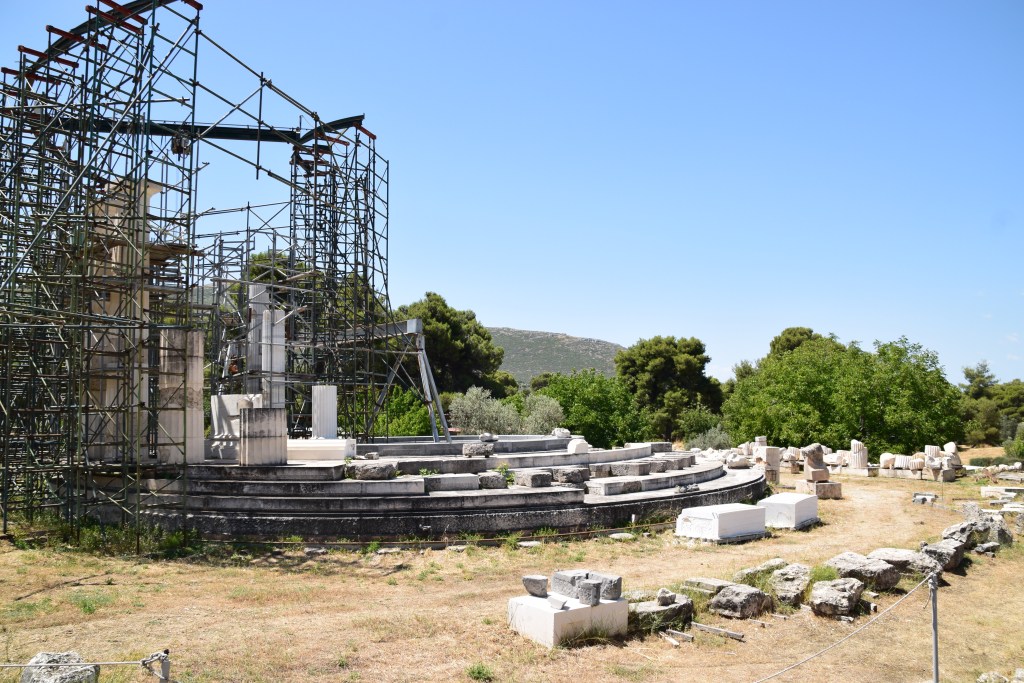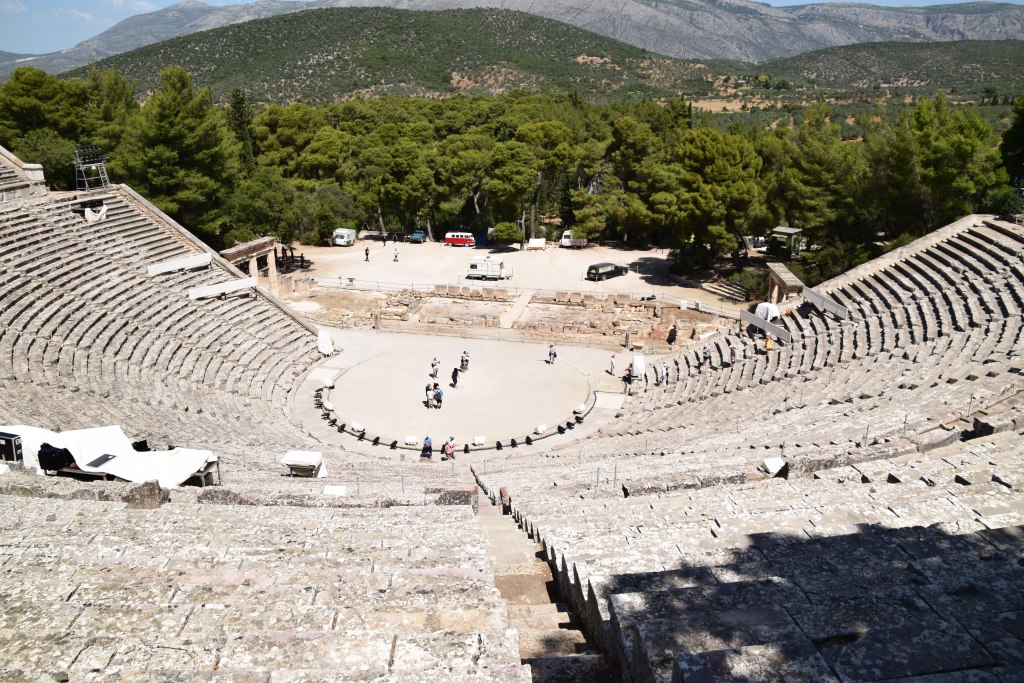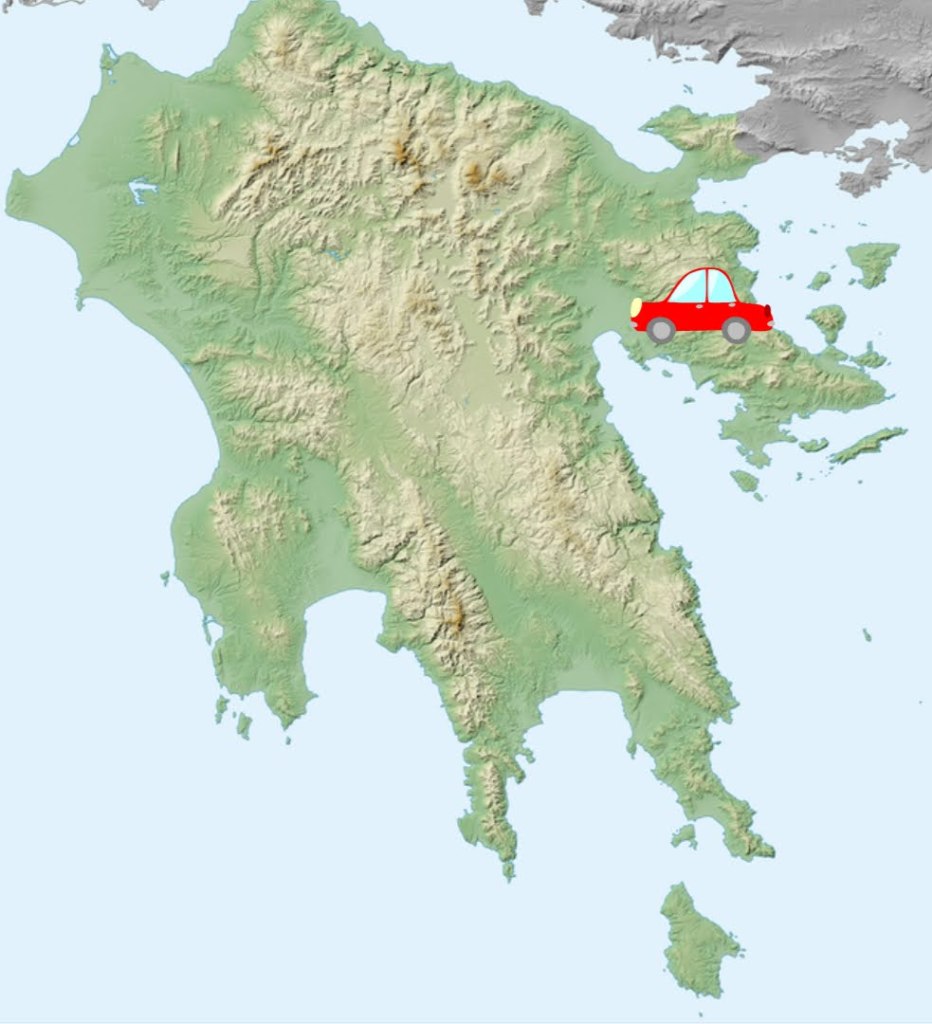The road to Epidaurus is like the road to creation. One stops searching. One grows silent, stilled by the hush of mysterious beginnings. If one could speak one would become melodious….
(Henry Miller)
Tucked away in a quiet valley in the northeastern Peloponnese, the UNESCO World Heritage Site of Epidaurus is attributed by many as the cradle of modern medicine. Once the greatest place of healing in the ancient world, the sanctuary here was dedicated to Asclepius, the Greek God of Medicine. Pilgrims, many having travelled great distances, would make sacrifices at the altars and purify themselves before entering the Abaton – or incubation hall- where they awaited Asclepius to visit them in a dream and either cure them in their sleep or show them what treatments to follow. Dreams and visions were reported to the priests at the site, who, guided by Asclepius, would then prescribe medicines, diets, exercises and even surgery. Their use of herbs, cleaning rituals and surgical instruments marked the transition from belief in divine healing to scientific innovation.

Asclepius had many sanctuaries erected in his honour but Epidaurus is the most important -not only because of the great variety of treatments available here, but also due to the belief that this was his birthplace.
Accounts vary about his origins but the most common story is he is the son of Apollo and a mortal mother- Coronis.
Coronis had an affair with a mortal man named Ischys and was killed to avenge Apollo’s honour. The baby was snatched from the flames of the pyre – cut from Coronis’ womb – and so he was named Asclepius, meaning ‘to cut open’ in Ancient Greek.
He was raised by his father and educated by the tutor, Chiron the Centaur. From a young age, he showed interest in medicine and the art of healing.
He married Epitone, Goddess of Soothing Pain. They became parents to many children, including Hygieia, Goddess of Health, and Panacea, Goddess of Medicines.
After his death, he was recognised as the god of medicine, healing, rejuvenation and physicians.

To facilitate the cures, the site included a two storey dormitory with 160 rooms. parts of the building were cut off from the rest – allowing for isolation due to contagious diseases etc. There were several temples, including one dedicated to Artemis (his aunt!) and a circular Tholos which housed an underground maze.

Sacred dogs roamed freely through the healing temples – it was believed that their saliva had curative powers so pilgrims would allow them lick their wounds! Non- venomous snakes were also used in the healing ritual and they too had the freedom of the sanctuary – slithering around the dormitories as the patients slept and dreamt!!

The ancient Stadium hosted athletic games every four years in honour of Asclepius. When first constructed, in the 5th century BC, spectators had to stand but limestone seats were added in the late 4th century BC.

The BIG attraction in these here parts is the Theatre. Almost perfectly intact, the enormous half-moon limestone structure could accommodate 14,000 people. Apart from its symmetry, this marvel of ancient engineering is remarkable for its near-perfect acoustics – you can hear a pin drop from even the highest tier!
Hidden by trees and earth for centuries, the theatre was revealed during the first systematic excavation of the sanctuary in 1881. Nowadays, it hosts the Epidaurus Festival every summer.



The small Archaeological Museum was established in 1897 to store and exhibit the findings of the excavation. It houses parts of the sanctuary buildings as well as statues, medical tools, coins, etc.








You’ve brought back my 1970’s memories of the Peloponnese which I drove throughout in an old VW KOMBI, and on a subsequent trip on public transport. A great place, and a great adventure!
Wow!! That must have been a great trip Therese!! Before this summer, I was last there in 1981 – public bus from Athens to Olympia and stayed overnight but actually can remember very little of it so it was great to finally return…
We visited here on our long Greek odyssey last year – actually my second visit and Michaela’s first. Of all of the ancient Greek sites this is one of the most stunning and the most enjoyable, the theatre is as you say absolutely awe inspiring. My two visits were about 15 years apart – and the same waiter was still working at the cafe. I know this because both times he told me he is a Wolves supporter! Wonderful place to lose yourself in for a few hours.
We were so impressed with the place – there was only a handful of visitors there at the end of June so it was as though we had it to ourselves… I LOVE your waiter story – you must have been so chuffed to see him there after all those years!! ( although why not – I was in the same school for 36 years!!!😅 😂 )
I’ve heard of Epidaurus of course, but never visited, so this virtual tour was a treat! I wasn’t aware of the links to the start of modern medicine – although it has to be said that they had a way still to go if they thought having a wound licked by a dog was at all helpful! The theatre looks absolutely stunning 😮
I have to admit that I hadn’t heard of it!!! So much so that we could just as easily have missed out on it – When you’re looking at the map of Greece and see all the antiquity sites, you’re definitely going to miss out on something significant! But we were staying close enough to it and every post and review of the Peloponnese included it so we thought we’d have a quick look! Glad we did!!
What a fascinating place!
The whole country is full of gems such as this – one massive treasure trove!!
How cool! It amazes me things like this are still around today so many years later.
It was fortunately hidden in woodland for centuries so avoided too much plunder. The biggest problem nowadays is tourism!
It looks amazing! I’d love to visit one day 🙂
The whole peninsula is amazing – you’d love it Hannah…
Thanks for the tour around Epidaurus, Marie. It is pretty clear, that with a history as rich and expansive as that of Greece, there is much more waiting for you to explore than the Acropolis and Delphi. I’ve never been to Greece, but have always been fascinated by all the archaeological finds and sights one can visit and explore. Thanks for sharing and have a good day 🙂 Aiva xx
I’m sure you’ll get there some day Aiva – you’ll love it!
An astonishing place, new to me as well as the legends and facts behind it. Excellent post Marie.
Thanks a mil Roy. I didn’t know of it until we started planning the trip – We couldn’t see everything luckily we didn’t leave it out!
What a fabulous place!
Modern research does show that dog saliva has antibacterial properties, and wounds licked by dogs heal twice as quickly. The physical effect of licking can also help remove debris from a wound.
However, evolution means it works best on dogs, rather than humans! Some humans are allergic to dog saliva and dogs mouths do contain bacteria that might not be so helpful to humans.
Thanks for that Jackie – good to know its more than an old wives’ tale! Would your dogs ever lick each other’s wounds?
They don’t lick each others’ wounds, but they lick their own – and ours if we let them!
🐶 🐶 🐶